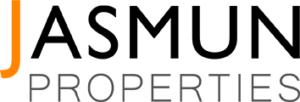The global economic landscape is increasingly influenced by shifting trade policies and tariff changes. For property investors, this presents both challenges and opportunities. While the direct impact may seem distant, the ripple effects can significantly influence construction costs, market stability, and overall investment returns. In this article, we’ll explore strategies to “tariff-proof” your portfolio, ensuring resilience in an uncertain economic climate.
Understanding the Impact:
Tariffs, essentially taxes on imported goods, can lead to:
- Increased Construction and Renovation Costs: Building materials like steel, aluminum, and timber may become more expensive, impacting development and renovation projects.
- Economic Uncertainty: Trade tensions can create market volatility, making investors more cautious and potentially slowing down property transactions.
- Supply Chain Disruptions: Delays in material delivery can affect project timelines and increase costs.
Strategies for Resilient Property Investment:
- Diversification is Key:
- Avoid concentrating your investments in a single property type or location.
- Consider diversifying across residential, commercial, and industrial properties.
- Explore investments in areas less reliant on imported materials or heavily traded goods.
- Thorough Due Diligence:
- Conduct in-depth research on potential investments, considering the long-term economic outlook of the area.
- Assess the potential impact of tariff changes on construction and renovation costs.
- Understand the supply chains for building materials in your chosen locations.
- Focus on Local Sourcing:
- Where possible, prioritize properties that utilize locally sourced materials.
- This can mitigate the impact of tariffs on imported goods and support local economies.
- Long-Term Investment Horizon:
- Property investment is inherently a long-term strategy.
- Focus on properties with strong fundamentals and long-term growth potential.
- Avoid making impulsive decisions based on short-term market fluctuations.
- Cost Management:
- Carefully manage construction and renovation budgets, factoring in potential cost increases due to tariffs.
- Explore cost-effective building materials and construction methods.
- Find contractors with strong supply chains.
- Monitor Market Trends:
- Stay informed about global trade policies and their potential impact on the property market.
- Follow reputable financial news sources and consult with property market experts.
- Pay close attention to changes in the value of the Pound.
- Consider Rental Market Stability:
- Properties generating consistent rental income can provide a buffer during economic uncertainty.
- Focus on areas with strong rental demand and stable rental yields.
Adapting to Change:
The property market is constantly evolving, and investors must be adaptable to change. By implementing these strategies, you can build a resilient portfolio that can withstand the challenges posed by tariff changes and other economic uncertainties.
Conclusion:
While tariff changes can introduce uncertainty, they also present opportunities for savvy investors. By diversifying your portfolio, conducting thorough due diligence, and focusing on long-term growth, you can navigate these challenges and build a resilient property investment strategy.

